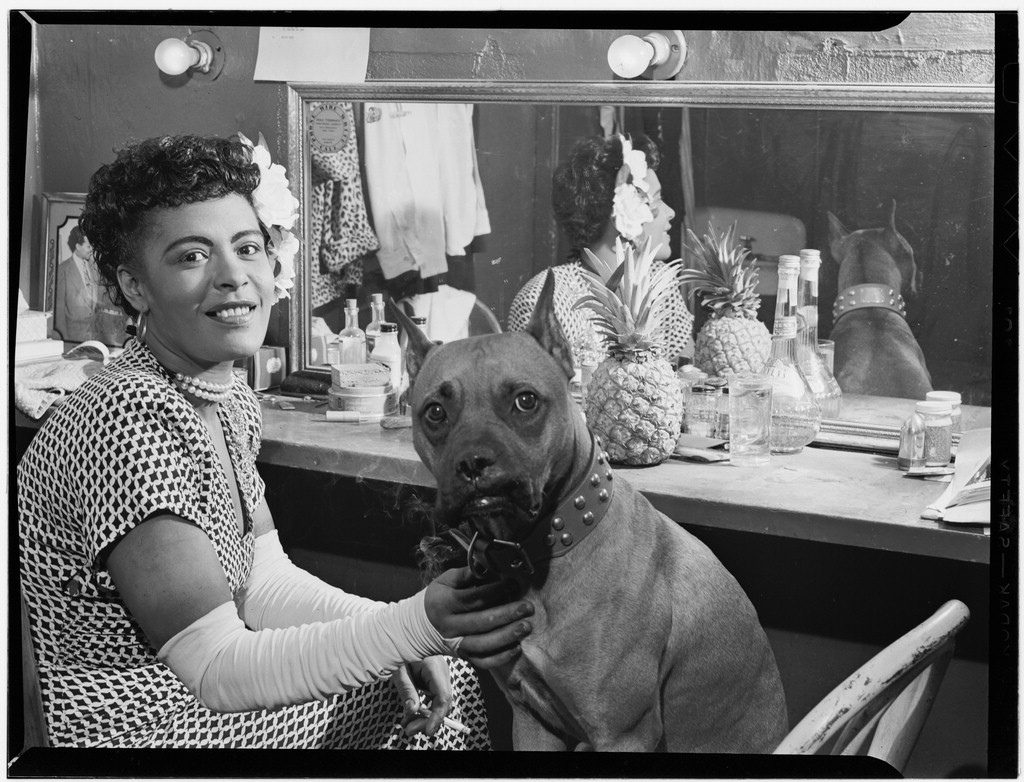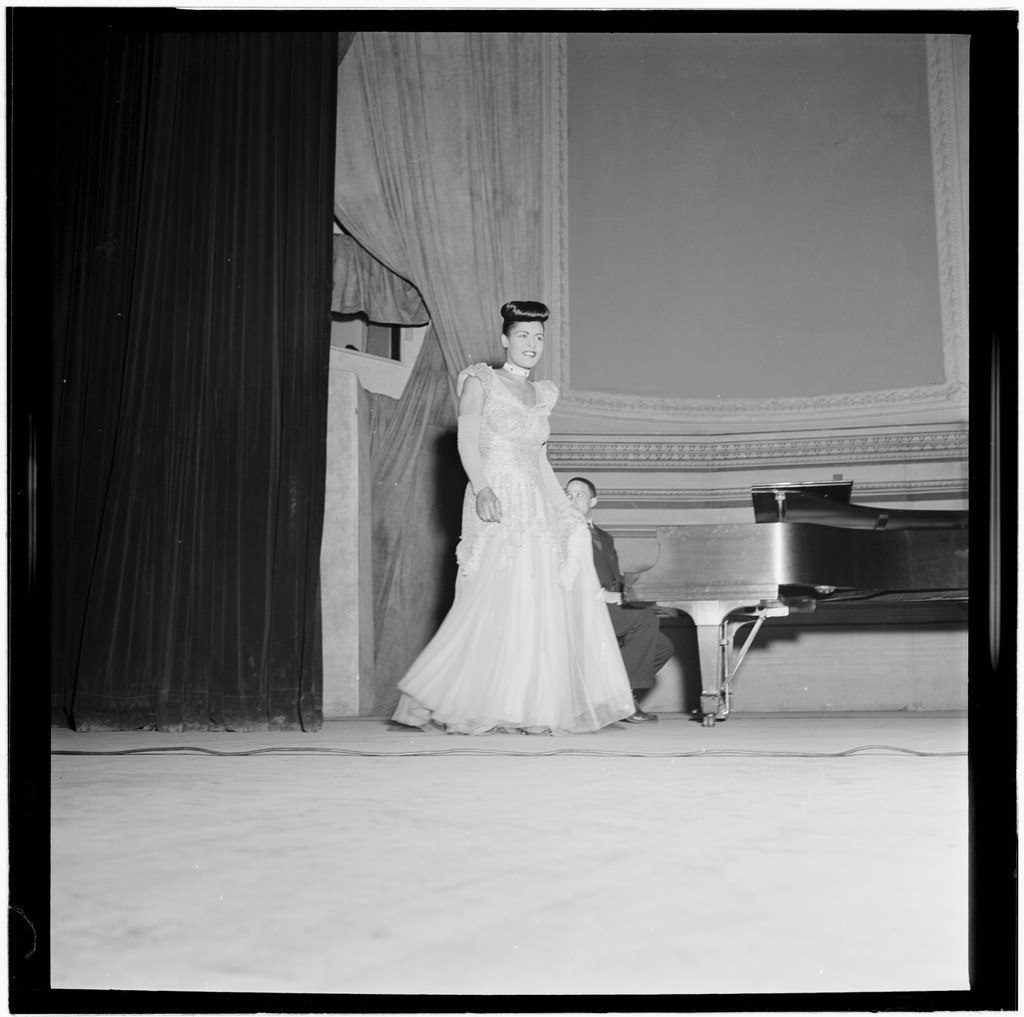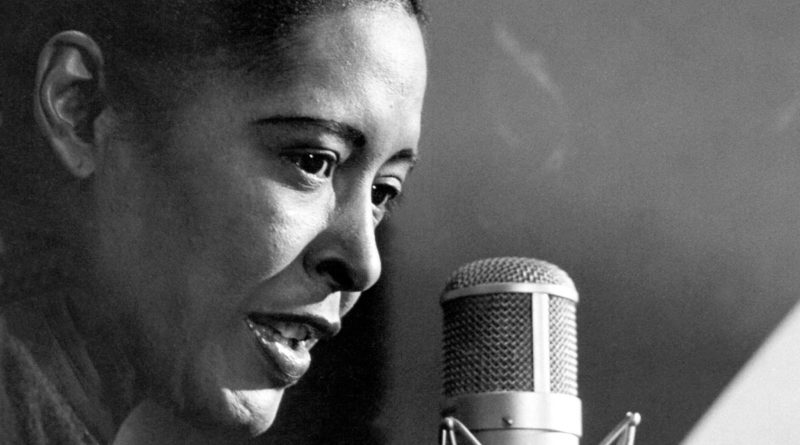UPDATE (March 11, 2019): The city has announced that it will commission a Billie Holiday memorial, joining new statues for Elizabeth Jennings Graham, Katherine Walker and Dr. Helen Rodríguez-Trías.
Graham, the subject of a landmark case that desegregated New York City mass transportation, was also suggested by our readers.
The city previously announced the creation of a monument to Shirley Chisholm.
Here’s our pitch for a monument to Holiday which ran back in July 2018.
The She Built NYC! campaign, a new program from the Mayor’s Office and the Department of Cultural Affairs, seeks to commission “a public monument or artwork on city property with a focus on women’s history.” The Bowery Boys would like to put our two cents into this debate and we’ve recently presented five nominees for this honor.
Throughout the month, we will shed a little light on a few of these choices. And we’d love to hear yours! Leave a choice in the comments section and we will compile them in a couple weeks in a dedicated article. At the end of the month, we’ll send all the choices — both yours and ours — to the nomination committee.
Artists and entertainers make natural candidates for statues and public commemorations as many become immortal with the passage of time, their influence imprinted on future generations. There are several such honors for artists in New York — all men (but one).
Among the city’s statuary entertainers are Edwin Booth, Jackie Gleason, Duke Ellington, George M Cohan, Ludwig Van Beethoven, William Shakespeare and countless other writers and composers (many in Central Park). But in Bryant Park, one can find a single bust dedicated to a female writer — Gertrude Stein.
New York City needs another! And we nominate one of the greatest vocalists in American popular music – Billie Holiday.

Her impact upon American music is profound, changing the way vocalists interpret songs, bringing out extraordinary subtlety and richness beyond the lyrics and instrumentation. And she did it within a set of important Manhattan music venues, from Midtown to Harlem. Hers is the story of New York’s own jazz legacy.
Her story is full of drama and paradox, moments of sadness, others of pure ecstasy, in the midst of New York’s history in the making. At its core, her biography is a reflection of the black experience in the 1930s and 40s and how separations of race effected the music scene, how those impressions still reverberate today.
She was born Eleanora Fagan in Philadelphia on April 7, 1915, and first arrived in New York as a teenager. Her first home was in Harlem, a neighborhood in the midst of a renaissance of black art, music and literature.
She worked her way through many of Harlem’s great music venues of this period (Small’s Paradise, Covans), singing at 2-3 in the morning, working for tips, hoofing from table to table.
She experimented with her voice, understanding what captivated an audience, learning to interact with gangsters, randy young men, even white movie stars. She shook off her ragged appearance, recognized that a little glamour, a fancy dress, would also help sell her songs. It was at this time she took her stage name Billie, from a white silent film actress named Billie Dove, and Holiday from her father.

What she learned to do was style music, using her vocals in much the same way as a jazz instrumentalist. She stepped back from the precise hit-every-note style of predecessors for discovered ways of dramatizing music with what some called a slurred or sauntering tone, perhaps one beat behind where a traditional songstress would have come in. By the mid 1930s, she had already invented a singular musical style, captured in recordings for Columbia Records.
In 1937 she began touring with famous big-band orchestras – first with Count Basie, then Artie Shaw. On the road, she came up immediately against the racial and gender prejudices of the day.
Sadly she didn’t even need to leave New York to experience this. In the late 1930s, most hotels in New York City had strict segregation policies. One October evening in 1938, the manager asked Shaw to tell his young singer to use the freight elevator as they did not want guest to think that a black woman was staying there.

But a life changing experience was just around the corner — a Greenwich Village club named Café Society, a venue specifically designed to mix black and white audiences. The novelty of it all brought a lot of attention to Café Society, as did its coterie of progressive celebrities. And this brought attention to Holiday, just at the moment that many of her recordings were now being listened to across the country.
For in April 1939 a Jewish songwriter named Abel Meerepol asked Holiday to perform a new song – one about racism in the South. “If you think it’s okay man, I’ll do it,” said Billie.
“Strange Fruit” was a stark and graphic song about the lynching of black men. She would sing ‘Strange Fruit’ for the remainder of her career, a rare political message in a career mostly comprised of swing and torch songs.
In the 1940s Holiday became one of America’s most famous recording artists, but the real magic happened inside a cluster of smoky music clubs around the area of 52nd Street, between Fifth and Seventh Avenues. Billie Holiday was Swing Street. She played most of these places during the mid and late 1940s — the Onyx Club, Kelly’s Stable, the Famous Door and Club Downbeat.
She lived the life of a night owl, eyes stinging from smoke filled bars, drinking continuously. But fans would have clearly noticed a startling change in her off-stage demeanor by the time she got to Onyx. At some point in the 1940s she had begun turning heroin, eventually shooting it up before shows. Her addiction worsened throughout her life, even as she graduated to larger, more ‘respectable’ venues like Town Hall and even Carnegie Hall (pictured below in 1946).

Perhaps due to a renewed interest by the curious public (her substance-abuse troubles had made the papers), the Carnegie Hall concerts were sold out for weeks, and additional seats were placed on the aisle, with even 600 people sitting on the stage behind her.
That first night, she sang 21 song and 6 different encores. People claim it was the greatest concert she ever gave.
In 1958 Frank Sinatra said of her: “With few exceptions every major pop singer in the US during her generation has been touched in some way by her genius. It is Billie Holiday who was, and still remains the greatest single musical influence on me. Lady Day is unquestionably the most important influence on American popular singing of the last twenty years.”
Holiday died on July 16, 1959, leaving the world countless recordings of undeniably beauty (not to mention her biography Lady Sings the Blues).
A public memorial to Billie Holiday would serve not only as a tribute to her impact on modern music, but would also function as a tribute to New York City’s forgotten musical districts — Harlem’s 133rd Street, Midtown’s 52nd Street, the Village’s integrated music clubs.
For more information on Holiday’s bittersweet career, check out our podcast Billie Holiday’s New York. Portions of the article above are taken from this podcast. You can hear the entire thing here:

